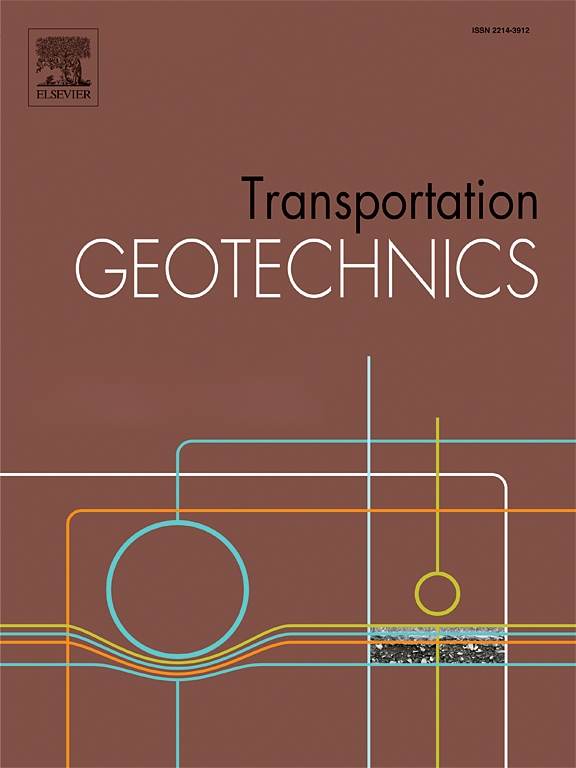一种估算压实颗粒状岩土材料刚度的新方法
IF 5.5
2区 工程技术
Q1 ENGINEERING, CIVIL
引用次数: 0
摘要
交通基础设施涉及使用大量压实的地质材料,导致重大的经济和环境影响,需要在项目的各个阶段加以解决。提出了一种新的实验室程序来估计路堤、路基、颗粒基和底基的刚度。利用完善和简单的设备,产生了一种易于实施和具有成本效益的方法,该方法结合了改进的Proctor测试的压实过程和重复静态板负载测试的加载方案,适应了这种新的“微型板负载测试”(mPLT)的简化几何形状。这使得在一次测试中估计压实特性和垂直应变模量成为可能。随后,通过数值模型的反算,导出了解析设计所需的弹性模量。土壤样品使用不同的等级,压实能量和水分含量进行测试,以产生与感兴趣的变量相关的各种回归表面。此外,从该试验中获得的实验室应变模量与现场进行的全尺寸静板载荷试验进行了比较。结果表明,该方法可为民用基础设施压实填料的设计和质量控制提供有价值的参考。本文章由计算机程序翻译,如有差异,请以英文原文为准。
Novel method to estimate the stiffness of compacted granular geomaterials
Transport infrastructure involves the use of large volumes of compacted geomaterials, leading to significant economic and environmental impacts that need to be addressed in all stages of the project. A new laboratory procedure to estimate the stiffness of embankments, subgrades, granular bases and subbases is proposed. The utilization of well-established and simple equipment results in an easy-to-conduct and cost-effective method that combines the compaction procedure of a Modified Proctor test with the loading scheme of a repetitive static plate load test, adapted to the reduced geometry of this new ‘miniature plate load test’ (mPLT). This enables the estimation of the compaction characteristics and the vertical strain modulus in a single test. Subsequently, the elastic modulus needed for analytical design is derived through back-calculation using a numerical model. Soil specimens were tested using different gradations, compaction energies and moisture contents to generate various regression surfaces that correlate the variables of interest. Furthermore, the laboratory strain modulus obtained from this test was compared with full-scale static plate load tests conducted in the field. The results show that this methodology could become a valuable reference test to aid in the design and quality control of compacted fills for civil infrastructures.
求助全文
通过发布文献求助,成功后即可免费获取论文全文。
去求助
来源期刊

Transportation Geotechnics
Social Sciences-Transportation
CiteScore
8.10
自引率
11.30%
发文量
194
审稿时长
51 days
期刊介绍:
Transportation Geotechnics is a journal dedicated to publishing high-quality, theoretical, and applied papers that cover all facets of geotechnics for transportation infrastructure such as roads, highways, railways, underground railways, airfields, and waterways. The journal places a special emphasis on case studies that present original work relevant to the sustainable construction of transportation infrastructure. The scope of topics it addresses includes the geotechnical properties of geomaterials for sustainable and rational design and construction, the behavior of compacted and stabilized geomaterials, the use of geosynthetics and reinforcement in constructed layers and interlayers, ground improvement and slope stability for transportation infrastructures, compaction technology and management, maintenance technology, the impact of climate, embankments for highways and high-speed trains, transition zones, dredging, underwater geotechnics for infrastructure purposes, and the modeling of multi-layered structures and supporting ground under dynamic and repeated loads.
 求助内容:
求助内容: 应助结果提醒方式:
应助结果提醒方式:


